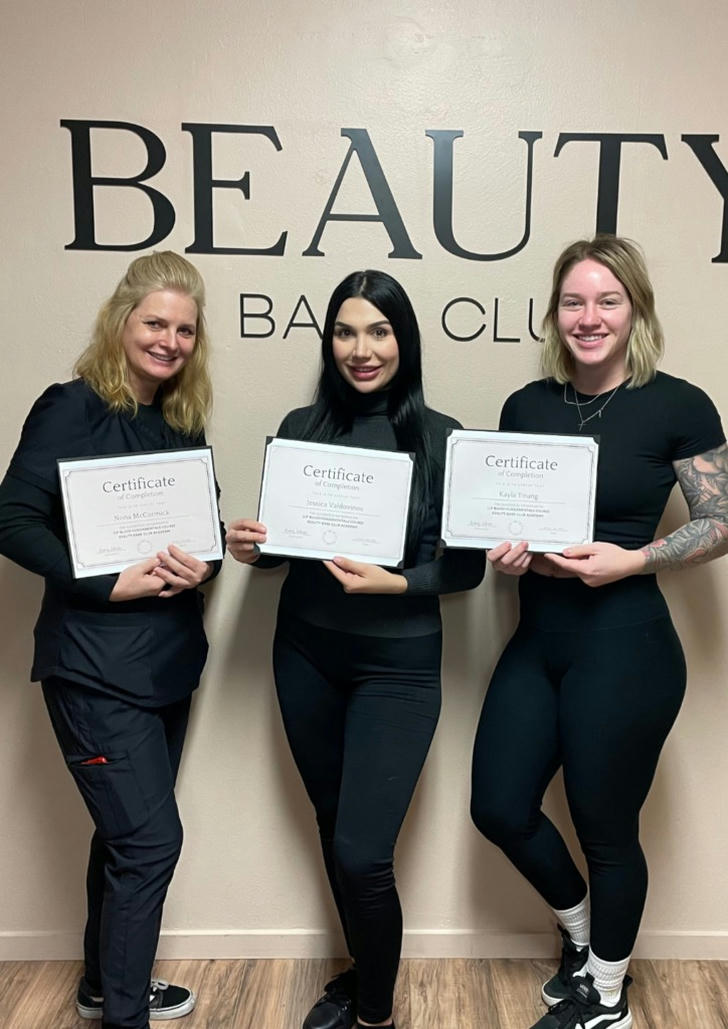Free Beauty Training Courses in the United States-Government Grants Help Dreams
In the United States, the beauty industry has always been a vibrant and in-demand field. For those who are interested in pursuing careers such as hairdressing, makeup, and skin care, beauty training is an important step to enter this industry. However, many people may hesitate because of the high tuition fees. Fortunately, many government-funded programs, scholarships, and grants provide free or subsidized training opportunities for those who are interested in entering the beauty industry.

Introduction to Beauty Training Courses
Beauty training courses usually include multiple aspects, such as:
Hairdressing: from basic hair cutting and dyeing to advanced hair design and care techniques.
Makeup: Learn basic makeup, stage makeup, wedding makeup and other techniques.
Skin care: involves facial care, acne treatment, anti-aging therapy, etc.
Nail care: includes skills such as manicure and nail art design.
These courses are usually offered in beauty schools, community colleges, and some professional training institutions. In the course, students not only learn theoretical knowledge, but also gain practical experience through internships and practice.
Benefits of free courses
Relieve financial burden: Through free training courses, students can reduce the pressure of tuition and related expenses.
Obtain certification: Through government-funded or scholarship-supported courses, students have the opportunity to obtain industry certification and prepare for employment.
Employment opportunities: Free training is often equipped with job placement services to help students smoothly enter the beauty industry.
Personal skill improvement: Even if you don’t directly enter the beauty industry, the skills you gain can enhance your personal career development.
How to get free courses or related grants
Government funding programs Several government programs in the United States can help students pay for beauty training, including:
WIOA (Work Innovation and Opportunity Act): This program provides vocational training funds for unemployed people and low-income families. Through this program, eligible individuals can receive funding for beauty courses, including tuition and textbook costs.
TAA (Trade Assistance Act): This program provides training and education funding for workers affected by globalization, suitable for those who have lost their jobs due to manufacturing outsourcing or job transfer.
Pell Grant: Although Pell Grants are primarily used for academic programs, some cosmetology schools accept Pell Grants, especially those that are accredited.
Veterans Benefits Veterans can receive funding for cosmetology tuition through the GI Bill. Veterans and their spouses can use these benefits to pursue cosmetology training.
Scholarships and Grants for Cosmetology Schools Some cosmetology schools offer scholarships or grants to help students pay for tuition. For example, Paul Mitchell Schools and Aveda Institutes both offer scholarships, some for students with financial difficulties, and some based on academic achievement or commitment to the environment.
State Job Training Programs Many states offer free or low-cost cosmetology courses through their own job training programs. State governments sometimes provide grants to unemployed or low-income people to help pay for cosmetology courses.
State Overview
California
California offers a variety of job training programs, especially through CalWORKs, which provides training support for low-income families. In California, eligible individuals can receive funding to pay for cosmetology school through WIOA or CalWORKs.
Texas
Cosmetology training funding in Texas is usually provided through the Texas Workforce Commission (TWC). TWC provides training grants to unemployed people and low-income families to help them learn cosmetology-related skills. In addition, the Texas GI Bill can also help veterans pay for tuition.
Florida
Florida also provides cosmetology training grants through the Florida Department of Education and Florida Workforce Development. The state government provides a variety of training grants for unemployed and low-income families, including cosmetology courses.
Application Requirements
Financial Need: Many free cosmetology courses require applicants to meet financial need standards, especially those who are low-income or unemployed.
Residency: Some funding programs require applicants to be U.S. citizens or legal residents.
Education: Some programs may require applicants to have at least a high school diploma or equivalent.
State Government Requirements: The requirements for participating in free courses vary from state to state, and some states require applicants to pass a vocational assessment or training program assessment first.

How to Apply
Apply for government funding programs: Apply for funding such as WIOA through your local career development center or American Career Center to learn about eligible training programs.
Apply for school scholarships or grants: Beauty schools usually post application information for scholarships and grants on their official websites. Applicants can apply for scholarships directly through the school’s official website.
Apply for veterans'benefits: Veterans can apply for the GI Bill through the U.S. Department of Veterans Affairs (VA) to pay for the tuition of beauty courses.
Available jobs
After completing the beauty program, students can work in a variety of positions:
Hairdresser: Provides haircuts, hair dyeing, perms and other services to customers.
Beautician: Provides beauty services such as facials, massages, and hair removal.
Makeup artist: Provides makeup services for special occasions, including weddings, fashion shows, photo shoots, etc.
Manicurist: Provides nail repairs and manicures to customers.
Beauty consultant: Provides advice and consultation to customers on beauty products and services.
In addition, many graduates may also choose to open their own beauty studio or beauty salon.
Conclusion
Although beauty training courses are expensive in the United States, students can obtain free or low-cost beauty education through various government funding programs, scholarships, veterans’ benefits, and beauty school funding programs. Through these programs, students can not only gain professional skills, but also lay a solid foundation for entering the beauty industry. Whether through federal or state government programs or through scholarships and funding for beauty schools, free beauty training provides more opportunities for those who aspire to work in the beauty industry. During the application process, understanding the various funding channels and application requirements and taking advantage of local resources will greatly increase the chances of obtaining free training.
